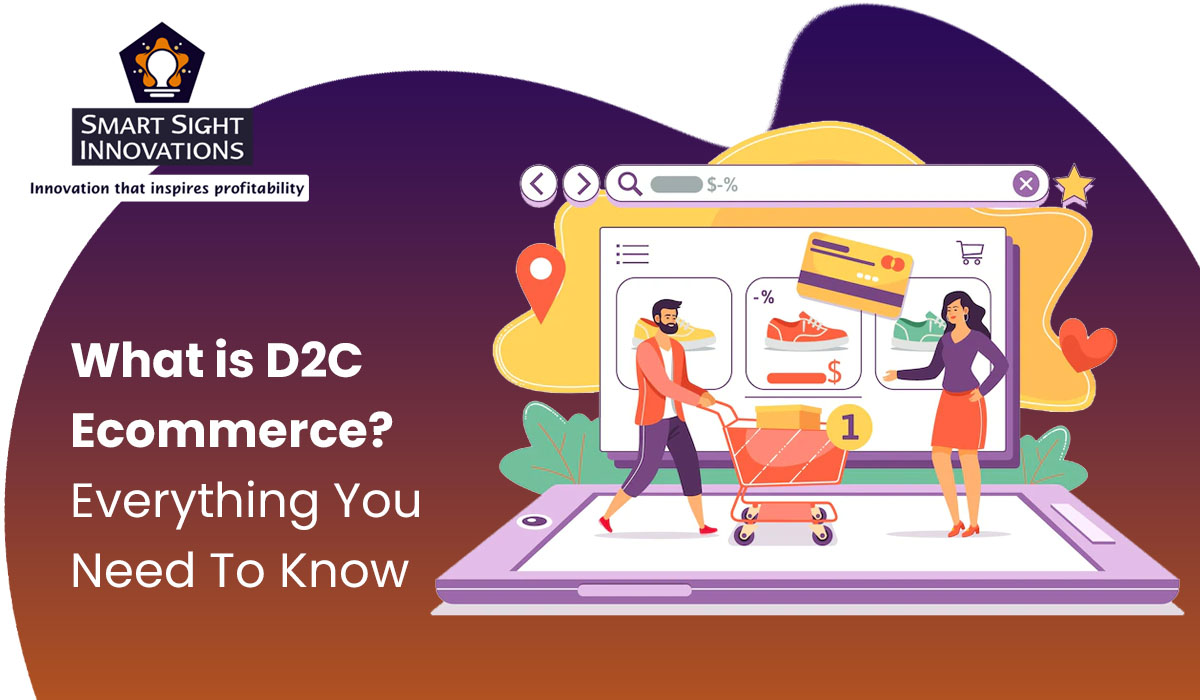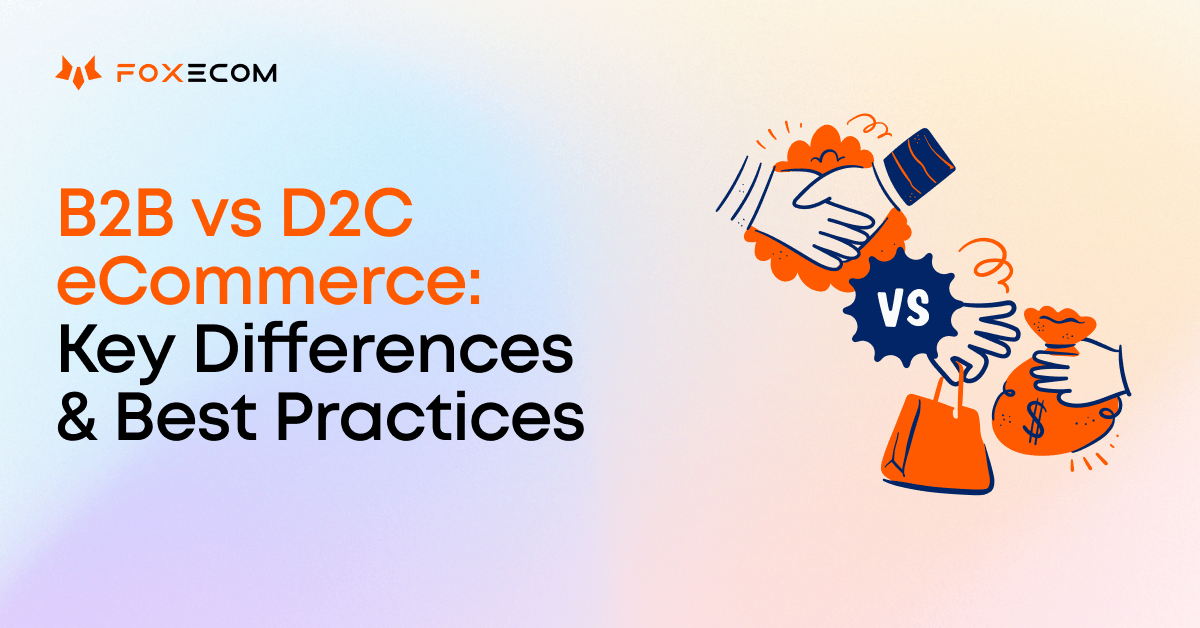Discovering the Prospective of D2C Ecommerce: A Comprehensive Guide for Organizations
The D2C ecommerce design presents a substantial shift in just how brand names involve with customers. It makes it possible for firms to bypass traditional retail networks, fostering much deeper links and potentially raised revenue margins. However, this approach is not without its intricacies. Comprehending the nuances of D2C ecommerce is crucial for brands intending to flourish. What approaches can they embrace to browse this developing landscape properly? The answers might redefine their organization approaches.
Understanding the D2C Ecommerce Version

Key Benefits of D2C Ecommerce for Brands
The D2C ecommerce design offers brand names substantial benefits, especially pertaining to increased revenue margins. By eliminating middlemans, firms can retain a bigger share of sales revenue. Furthermore, this direct connection with consumers cultivates boosted brand name loyalty, encouraging repeat acquisitions and lasting involvement.
Raised Profit Margins

Enhanced Brand Name Commitment
Building on the monetary benefits of D2C ecommerce, improved brand loyalty emerges as another crucial advantage for business engaging straight with customers. By establishing a direct connection, brand names can cultivate much deeper partnerships with their consumers, gaining insights right into habits and preferences. This straight interaction enables even more individualized advertising approaches, which reverberate highly with consumers. In addition, brands have the possibility to control their messaging and customer experience, reinforcing brand name values and constructing count on. When clients feel an individual connection, they are a lot more likely to return, advocate for the brand, and take part in community engagement. Inevitably, improved brand name commitment not only drives repeat acquisitions but likewise cultivates a passionate customer base, further solidifying a brand's placement in the marketplace.
Challenges Encountered by D2C Brands
D2C brand names come across several significant obstacles that can affect their success. Inventory monitoring issues can lead to equip lacks or excess, complicating procedures and client complete satisfaction. Furthermore, advertising spending plan restraints often restrict the ability to efficiently involve and get to target market.
Supply Monitoring Issues
Efficient stock administration provides a formidable difficulty for many brands running in the direct-to-consumer (D2C) space. These brand names typically come to grips with changing demand, which can cause overstock or stockouts, inevitably affecting consumer complete satisfaction and profits. Furthermore, the absence of sophisticated supply monitoring systems can lead to disparities between real stock levels and reported information, complicating order gratification. The varied array of items D2C brand names generally use also complicates stock administration, as variations in designs, colors, and sizes require more meticulous oversight. Additionally, several D2C services may fight with limited warehousing abilities, leading to inefficient use area and resources. Effective supply administration stays an important hurdle for D2C brand names intending for lasting growth and operational efficiency.
Advertising Budget Plan Constraints
Steering marketing spending plan restraints is a substantial obstacle for lots of direct-to-consumer (D2C) brands. Limited funds usually restrict these business' capability to purchase all-encompassing advertising and marketing strategies, causing minimized exposure in a competitive market. D2C brands frequently face the need to make best use of return on financial investment (ROI) while targeting certain target markets successfully. This challenge is worsened by rising expenses in digital advertising and the necessity to designate funds across multiple channels, consisting of social networks, search engines, and e-mail advertising. Many D2C brand names should introduce cost-effective marketing options, leveraging organic growth strategies and influencer partnerships. Inevitably, effectively maneuvering these spending plan restrictions is important for sustaining growth and accomplishing lasting productivity in the advancing ecommerce landscape.
Approaches for Building an Effective D2C Ecommerce Organization
As customers progressively seek direct links with brands, view it now establishing a successful D2C ecommerce service calls for a strategic method that prioritizes client involvement and count on. One efficient strategy is to create engaging brand name stories that resonate with target market, cultivating psychological links. Using social media sites platforms can boost presence and promote two-way interaction, allowing brand names to engage straight with customers.Moreover, personalized experiences via tailored marketing efforts can considerably boost customer retention and commitment. Executing loyalty programs and using special offers can even more incentivize repeat purchases.Streamlining the acquiring procedure is necessary, guaranteeing a straightforward user interface that improves the shopping experience. In addition, transparent interaction relating to delivery and returns constructs trust fund and motivates customer confidence.Finally, actively seeking consumer responses and reacting to it demonstrates a commitment to improvement and consumer complete satisfaction, important components in the competitive D2C landscape.
Leveraging Modern Technology for Boosted Client Experience
In today's competitive D2C ecommerce landscape, innovation plays a pivotal function fit customer experiences. Companies increasingly use sophisticated tools such as fabricated intelligence, chatbots, and customized algorithms to enhance communications and streamline the purchasing procedure. By integrating these modern technologies, brand names can give tailored item recommendations based upon specific preferences and purchasing actions, cultivating an extra interesting experience.Moreover, responsive web site designs and mobile applications assure that clients can access services seamlessly throughout numerous gadgets. Boosted settlement solutions, including electronic wallets and one-click checkouts, better simplify transactions, making it much easier for customers to make purchases.Data analytics likewise allows organizations to gather understandings right into consumer behavior, permitting constant enhancement of services and offerings. In general, leveraging modern technology not only boosts customer contentment however likewise grows loyalty, eventually driving long-lasting success in the D2C ecommerce field.
Advertising And Marketing Methods to Drive D2C Sales
How can brands successfully catch the interest of customers in a saturated market? To grow in the direct-to-consumer (D2C) landscape, brand names have to utilize targeted marketing techniques. Using social media sites platforms, brands can engage customers via interactive material, influencer partnerships, and user-generated messages. Customized e-mail projects can additionally promote a sense of connection, offering customized promos based upon consumer habits and preferences.Moreover, storytelling plays a vital duty in distinguishing a brand name's narrative, making it relatable and memorable. Brands need to buy seo (SEARCH their explanation ENGINE OPTIMIZATION) to improve visibility, guaranteeing their items are easily discoverable online. In addition, leveraging information analytics allows companies to improve their advertising approaches and recognize consumer trends much better. Eventually, a multi-channel strategy that integrates imagination with data-driven understandings can considerably improve D2C sales, enabling brand names to stand apart in a congested marketplace.
Future Fads in D2C Ecommerce
With the fast evolution of modern technology and consumer choices, the future of D2C ecommerce is poised for considerable change. Emerging patterns show a shift towards hyper-personalization, where brands take advantage of information analytics to tailor offerings to private customer needs. This modification enhances client experiences, cultivating commitment and engagement.Moreover, sustainability is becoming an important variable, with customers increasingly preferring brands that prioritize eco-friendly techniques - D2C Ecommerce Agency. Companies are expected to adopt transparent supply chains and sustainable products to satisfy this demand.The integration of artificial intelligence and increased fact will additionally reinvent the shopping experience, permitting customers to visualize products in their environments before purchase. Furthermore, social commerce is expected to grow, as platforms like Instagram and TikTok facilitate smooth shopping experiences directly within social media.These trends collectively signify a dynamic future for D2C ecommerce, stressing customer-centric strategies and innovative modern technologies that redefine consumer communications
Regularly Asked Inquiries
What Industries Advantage Most From D2C Ecommerce?
The existing concern highlights markets that thrive with direct-to-consumer (D2C) ecommerce. Remarkably, fashion, charm, electronic devices, and food fields utilize D2C models to boost brand commitment, enhance consumer connections, and maximize profit margins properly.
Exactly How Do Shipping Costs Affect D2C Rates Strategies?
Shipping prices considerably affect D2C pricing techniques. Organizations have to stabilize these expenses with affordable rates, thinking about client assumptions and revenue margins. Reliable management of shipping can boost customer complete satisfaction and drive sales in direct-to-consumer designs.
What Settlement Alternatives Should D2C Organizations Offer?
D2C organizations ought to provide varied payment alternatives, including credit/debit cards, electronic budgets, and purchase now, pay later solutions. This variety improves consumer ease, enhances conversion rates, and accommodates different customer choices in the on the internet buying landscape.
Just How Can D2C Brands Deal With Customer Returns Successfully?
D2C brand names can manage customer returns effectively by carrying out straightforward return policies, using pre-paid shipping tags, and making certain timely refunds (D2C Ecommerce Agency). Clear communication and structured procedures boost consumer satisfaction and urge repeat company
What Legal Factors To Consider Exist for D2C Ecommerce Procedures?
Lawful factors to consider for D2C ecommerce procedures include compliance with customer defense legislations, information privacy regulations, copyright rights, and tax requirements. Brands must navigate these complexities to stay clear of lawful challenges and assure smooth operations. By removing intermediaries, D2C brands can use competitive rates and promote a more intimate partnership with their customers.The D2C model is characterized by its reliance on electronic platforms, allowing brands to make use of social media, online markets, and their own sites to engage with consumers straight. D2C ecommerce assists in the collection of useful customer information, click over here now allowing brand names to tailor their offerings and advertising strategies successfully, ultimately driving sales and raising margins. In addition, brands have the chance to regulate their messaging and customer experience, strengthening brand name worths and developing trust. As customers increasingly seek straight links with brand names, establishing a successful D2C ecommerce company calls for a strategic method that prioritizes consumer interaction and depend on. D2C brands can take care of client returns successfully by executing user-friendly return plans, using prepaid shipping labels, and ensuring timely reimbursements.
Comments on “What to Look For When Vetting a D2C Ecommerce Agency for Your Online Store”